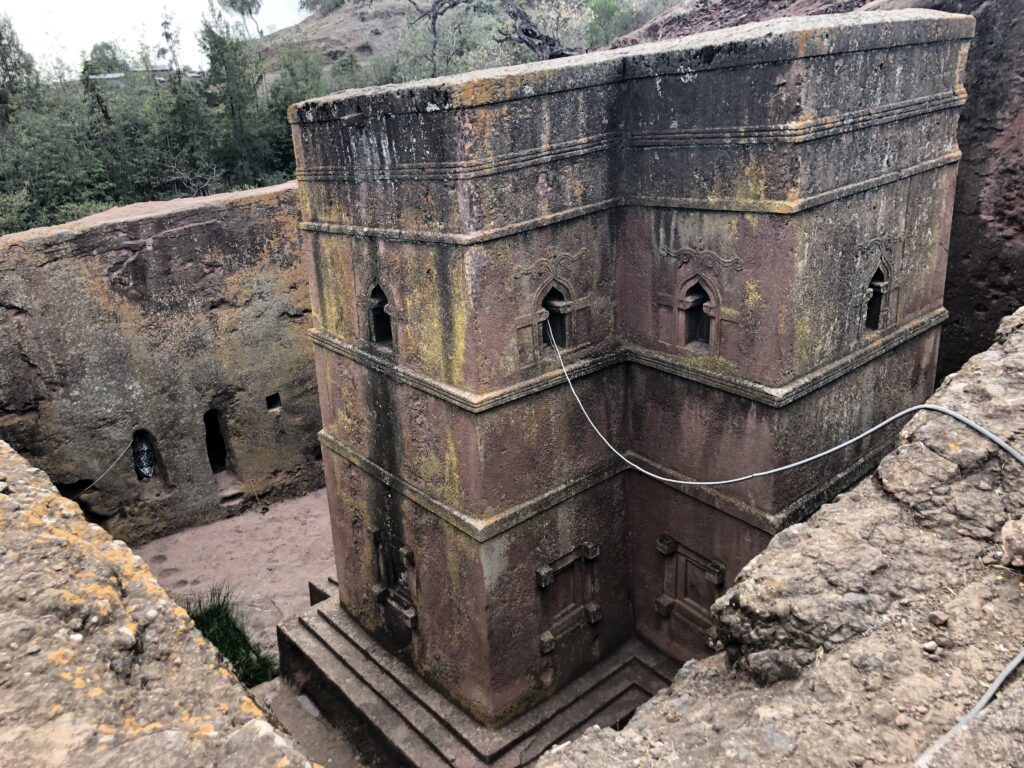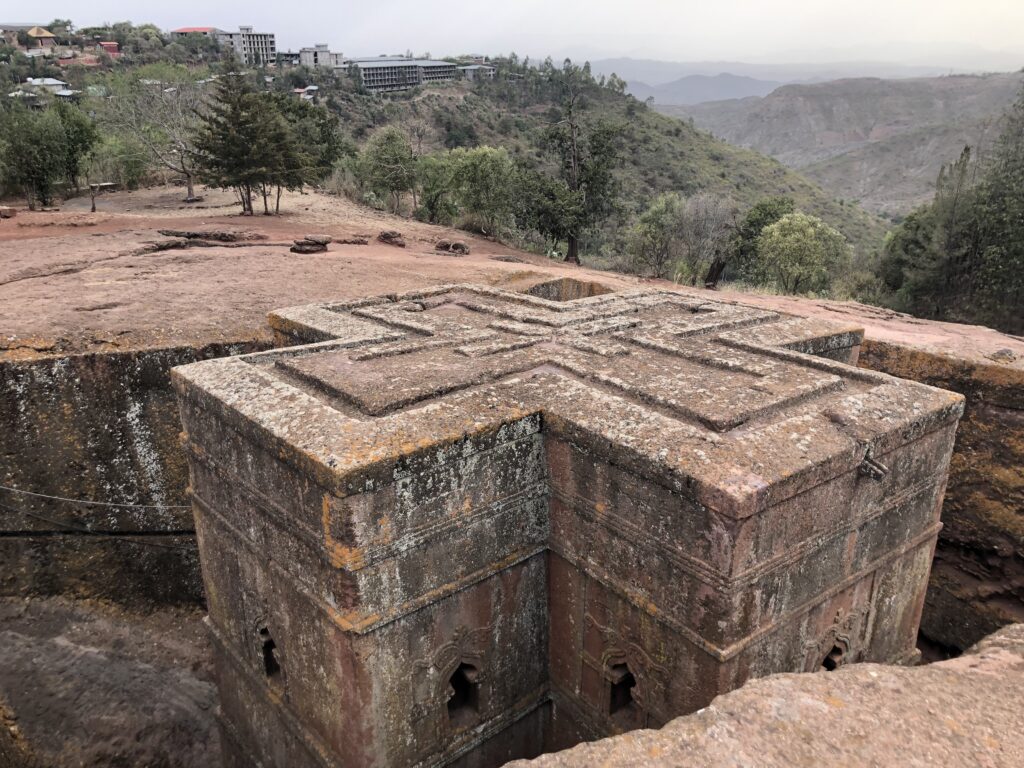Christianity in Ethiopia
The long history of Christianity in Ethiopia begins with the account of Philip and the Ethiopia eunuch (Acts 8:26-40). Ethiopian Orthodox Christians claim to be one of the earliest nations to embrace Christianity when King Ezana, leader of the Kingdom of Aksum (located in the northern part of the modern state of Ethiopia), embraced the Christian faith in the fourth century. The church was strengthened by the arrival of “the nine saints” from Syria (frequently depicted in churches’ iconography) in the 5th century.

Today’s banner photo is a baptismal font from Bete Amanuel (House or Church of Immanuel), one of numerous monolithic churches in Lalibela, Ethiopia, named for King Lalibela (r. ca. 1181-1221). According to legend, after a pilgrimage to Jerusalem, King Lalibela received a vision to build a “new Jerusalem,” and this complex of churches, carved out of mountains, was the work of the king with assistance of angels. While twenty-first-century Christians may approach this hagiography of the Ethiopian Orthodox Church with skepticism, one can say that King Lalibela’s decision to create these amazing structures indicts strong devotion to the Christian faith.
The most spectacular of the Lalibela churches is the Church of St. George, which, like the baptismal font, has a cruciform structure. Again, putting aside one’s skepticism about the story of their origins, the structures themselves communicate the core witness of the Christian faith—that Christ’s death on the cross has accomplished the salvation of the world, and a person is assured of that salvation by being joined to Christ’s death and resurrection in baptism (Romans 6).

++++++++
Sources used:
“Ethiopian Church” in The Oxford Dictionary of the Christian Church, 3rd edition
“Ethiopia” in Encyclopedia of Ancient Christianity
“The Rock-hewn Churches of Lalibela,” https://www.metmuseum.org/toah/hd/lali/hd_lali.htm
Photos by Rhoda Schuler, June 2024
